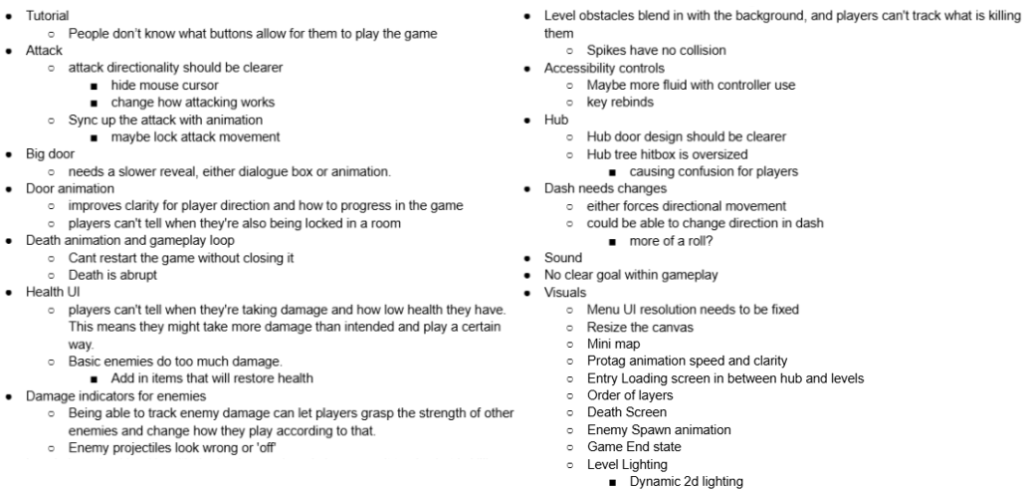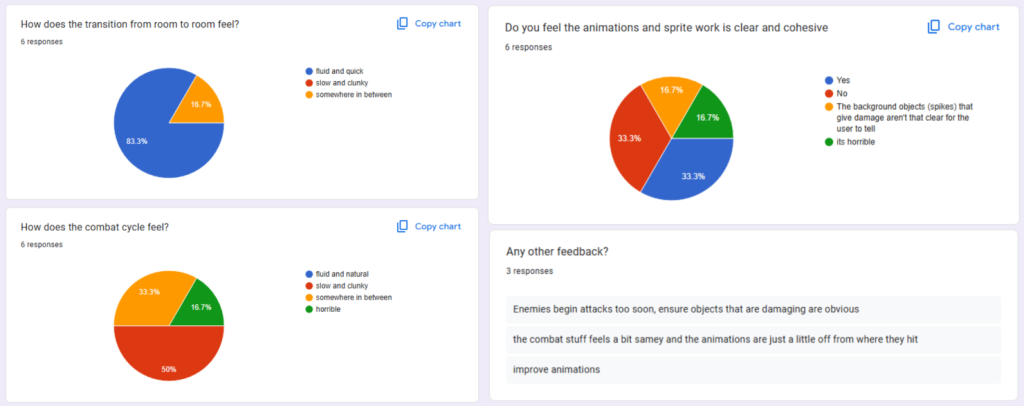During Week 5 of this project, we had a mandatory playtest session where play testers would come in, play and critique all of our games. These playtesters were anyone from: friends, students from other years, guests etc. This post documents the process and outcome of this playtest session.
Our Plan
Before the date of the playtest, we had to decide as a team what we wanted to be completed so that we could get feedback from it. It was vital that our scope for this feedback was set properly, so that it was doable within the timeframe we were given, and also not too easy that we wouldn’t have a sufficient amount of features in Lament to get feedback for.
At first, our initial plan was just to integrate the art and player movement into the procedural room generation system, to test the fluidity between roaming around the dungeons. In my case, this would mean implementing a camera system that would lock onto each room within the dungeon.

However, our team was able to meet all of the goals we had set for the playtest: artwork, animations, camera system etc. So I decided to push on us getting the combat working so that it could be tested, I asked our mechanics designer to try and implement the player attack while I would create the enemies that would populate the dungeon:

Once our mechanics designer had implemented the attack, she pushed it to the repository while I worked on the enemy. Once I had the first enemy complete (the Whispers) I had to implement health and damage to the player and the Whispers so that the combat system would finally be complete. Because of the time spent on this, I was unable to complete the second enemy in time for the playtest.
However, we had made a lot of progress and this is what we had implemented into Lament at this point:
- Start menu
- Working buttons
- Working camera system
- Locks onto rooms in the dungeon
- Zooms out at the large depression door
- Scene Transitions
- Procedural Room Generation
- Randomised dungeons
- Pixel artwork
- Envrionment obstacles (spikes)
- Working Player
- Pixel artwork + animations
- Attack
- Dash (with i-frames)
- Health script
- Whisper enemy
- Ranged projectiles
- Follow and run behaviour
- Health script

Feedback
Now that we had an actual playable game, it was time for the playtest. Xane and I each built the Unity project on our laptops and let players play it while we took notes on any critiques and compliments we received.


Notes

Although we had a lot of feedback and things to improve upon, we still received many positive comments on our game. Most of the criqitues we received were small inconveniences with the experience, like:
- Lack of feedback from the game
- Lack of HUD
- Lack of varying enemies
- Enemies being too strong
- Spikes blending in with background
- There was no respawn
- We had to Alt+F4 the game after every death
However, these were all easy changes or features that we had planned but just weren’t able to implement in the time frame we were given for the playtest. None of the playtesters were able to find any game-breaking bugs, which was a big plus.
Google Form
Our World Designer Josh, also created a google form that we sent to playtesters on slack after they had played our game that they could fill out, these were the results from that form:

Once we had all of the feedback from our notes and the google form, our Mechanics Designer put these into trello and catergorized them in terms of priority (Low, Medium and High priority.)
